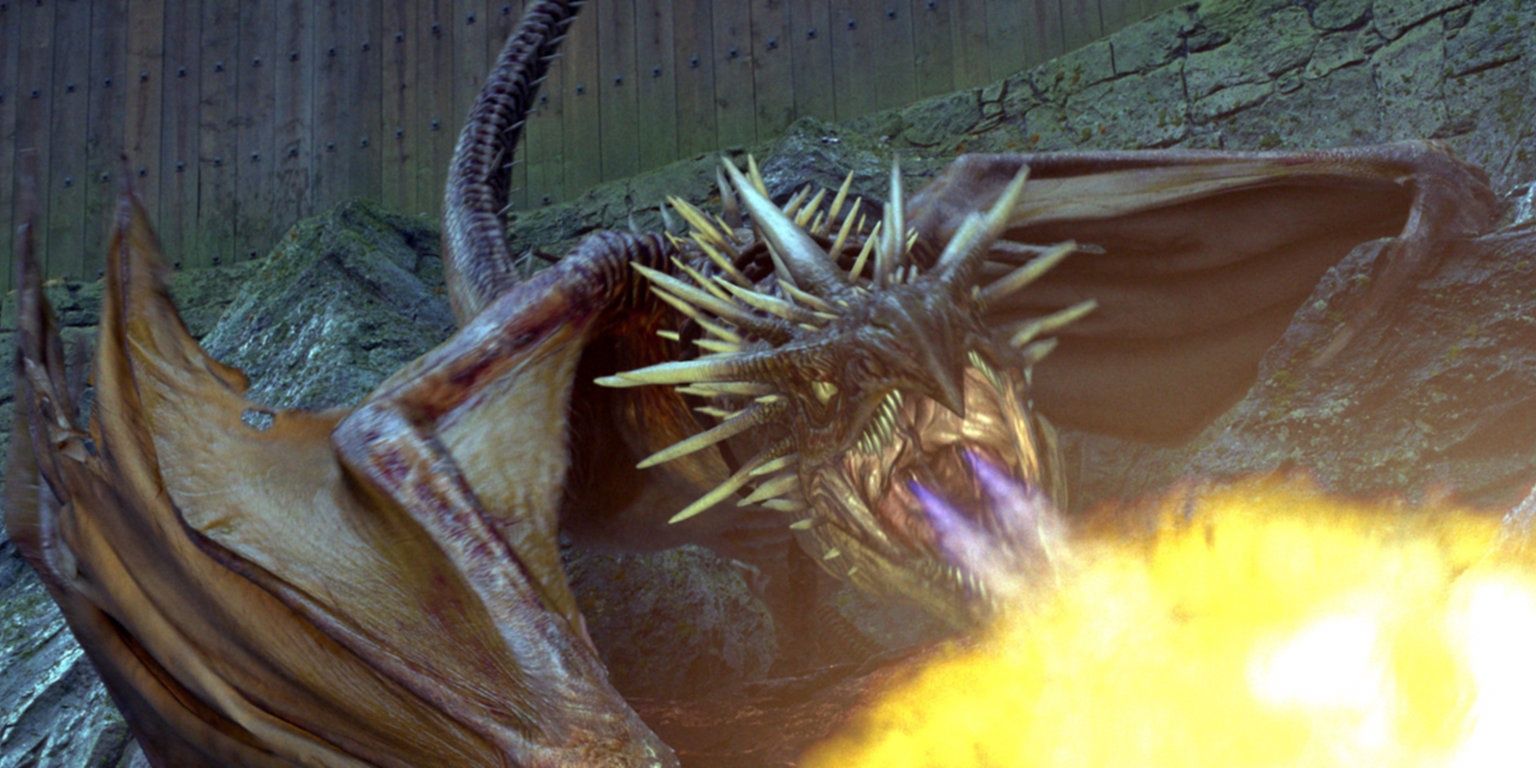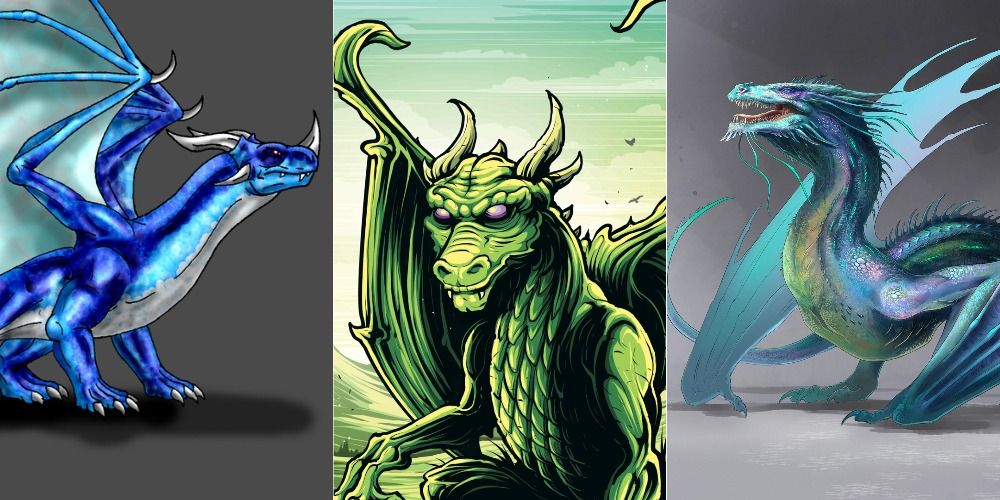Harry Potter: Interesting & Little-Known Facts About Dragons
Dragons have always been an integral part of fantasy and fiction, with many cool dragons gracing myriad television shows, movies, and books. The magical world of Harry Potter is no different, with dragons being one of the most feared magical creatures that exist in the wizarding world. Introduced in Harry Potter and the Philosopher’s Stone, in the form of Norbert (or Norberta), many dragons have since then made an appearance in the stories.
Despite being the most famous magical beast to exist in this world, even regular wizards do not risk keeping a dragon in their household and leave the care of these creatures to professionals known as Dragonologists. The primary reason for this is that dragons are temperamental and quite dangerous. The second reason is that even among wizards, not many know about them in detail or how to care for them. With many unanswered questions about dragons, it might make sense to learn some of the most interesting and lesser-known facts about these winged wonders.
10 Female Dragons Are More Dangerous

Amongst the many things that J.K. Rowling has made cannon about Harry Potter, is one fascinating fact about female dragons, as revealed in Fantastic Beasts & Where To Find Them. It is quite obvious that a giant fire-breathing animal with sharp claws and teeth is supposed to be dangerous.
However, as explained by Newt Scamander in his book, females are to be feared more than males. In fact, a female dragon is larger in size when compared to a male, and is arguably more aggressive. Despite the difference, wizards lacking specialized training shouldn’t approach either of the two genders.
9 There Are 10 Distinct Types Of Dragons

In the world of Harry Potter, dragons (like many other animals in the muggle world) have distinct breeds. There are ten most prominent breeds that have been classified.
These include the Chinese Fireball (also known as the Liondragon), the Antipodean Opaleye, the Hebridean Black, the Common Welsh Green, the Hungarian Horntail, the Peruvian Vipertooth, the Romanian Longhorn, the Ukrainian Ironbelly, the Swedish Short-Snout, and finally, the Norwegian Ridgeback. Although it is an infrequent occasion, mating between two different breeds has happened once in a while, resulting in the birth of a magnificent and extremely rare hybrid dragon.
Fanart by Kali Nelson, Dan Mumford, and Weronika Sobczyk.
8 Dragon-Egg Trading Is Strictly Prohibited

Being a magical creature, it is a given that dragons possess magical properties. In fact, many of their body parts such as scales, livers, blood, and even horns are utilized to make magical artifacts. Many powerful wizarding wands have Dragon Heartstring as their core.
However, one of the things that have been strictly prohibited is the trading of dragon eggs. As written in Newt’s book about magical creatures, dragon eggs are in fact a Non-Tradable Commodity of Class A.
7 Dragon Breeding Is Also Strictly Prohibited

Being highly dangerous and temperamental in nature, even wizards fear these scaly fire-breathing lizards. As revealed by Ron Weasley when Harry tells him that Hagrid has always wanted a dragon, owning or breeding a dragon is illegal according to wizarding law.
This was a decision taken during 1709’s Warlock Convention; the breeding of dragons was not only outlawed because these creatures were extremely hard to tame but also because the risk of a wizard getting detected by a Muggle was much higher if he/she happened to have a pet-dragon lounging in his/her backyard.
Art from Pottermore.
6 Dragons Are Spread All Over The Globe

While some dragons are more powerful than others, it cannot be denied that each and every one of them is a rugged creature capable of thriving in the harshest of environments. Although their common habitats are mountains, dragons have been spotted in many different locations and climates all across the globe.
As the names of each of these dragons suggest- they can be found in places ranging from New Zealand, Australia, Wales, Britain, Norway, Hungary, Peru, Romania, Sweden, to the harsh and icy Ukraine. However, it needs to be noted that they are extremely territorial creatures, and seldom like to share their territories with others, including other dragons.
5 The Most Beautiful

Despite being dangerous creatures, dragons are magnificent in their own right, with some of these breeds deserving appreciation for their incredible beauty. The most beautiful among the different dragon breeds have to be the Antipodean Opaleye. Its scales are pearly and iridescent, and its eyes do not have pupils, housing multicolored and glittering eyeballs, which grant the dragon its distinctive name.
The Hebridean Black is also quite beautiful owing to its jet-black body with an arrow-shaped tail and stark purple eyes. Another dragon that is quite attractive is the Swedish Short Snout, known for its small size and silvery-blue scale.
Fanart by Kali Nelson and Weronika Sobczyk.
4 The Rarest

While the dragon population is closely monitored by the wizarding community, who sometimes cull and sometimes breed these creatures to sustainably maintain their numbers; certain breeds are rarer than others. The Norwegian Ridgeback is one of these rare breeds. However, the reason for their scarce numbers is the dragons themselves. Known to be strikingly aggressive towards their own kind, they have managed to kill many of their brethren, leading to their rare status.
However, the rarest is the Romanian Longhorn. Unlike the Ridgeback, the Longhorn’s diminishing population is directly caused by wizard-interference, who have unapologetically killed many of these grand creatures just to harvest their scales. The numbers of Longhorns had dropped so much in recent years that a program for intensive breeding was established by wizards to save this endangered species of dragons.
Fanart by Kali Nelson.
3 The Most Aggressive

All dragons are inherently aggressive. However, while some do not attack unless provoked, others are simply born dangerous. The most aggressive amongst the dragon breeds include the Hebridean Black, the Norwegian Ridgeback, the Hungarian Horntail, and the Chinese Fireball.
These dragons have been known to attack human populations, fight amongst themselves, carry off cattle and large dogs, and even fishing boats, on some occasions. The Chinese Fireball, however, has an exception to its aggressiveness, being particularly inclusive of its own species. As many as three Fireballs have been known to share a single region; something which is rare for these extremely territorial creatures.
Fanart by Kali Nelson.
2 Encounters With The Outside World

Most dragons tend to remain within their territories and unless provoked do not interact with the outside world. However, their penchant for human flesh, as well as certain notable incidents in wizarding history clearly indicate these creatures coming in close contact with the outside population. The most notable of these include the 1970s incident whereby a number of kangaroos were reportedly killed by a male Opaleye. The Ilfracombe Incident also happened because of the Common Welsh Green. In 1802 a Norwegian Ridgeback was reported to have picked up a whale-calf from Norway’s coast.
Furthermore, during the later years of the nineteenth century, a rise in the population of the Peruvian Vipertooth- known for its liking of human flesh- the International Confederation of Wizards had to intervene and exterminate a large portion of their population. Similarly, the Ukrainian Ironbelly has also had its native wizarding community keep a close eye on its activities and population after an Ironbelly reportedly ambushed and carried off a fishing boat from the Black Sea, back in 1799. Thankfully, the boat was relatively empty.
Art from Pottermore.
1 Unique Method Of Incubation And Raising A Young Dragon

Unlike other animals, dragons have a unique method of incubating their eggs. As revealed by Hagrid, from what he had read in the antiquated Dragon Breeding for Pleasure and Profit, dragon mothers do not keep their eggs inside nests.
To incubate them, and make them ready for hatching, these mothers are known to breathe fire on their eggs, an alternative of which could be placing them on direct fire or a burning-hot utensil hung over the fire, as Hagrid had done with Norbert. Upon hatching, a dragon chick usually craves dragon milk, which if not available can be replaced by a mixture of brandy and chicken blood. This concoction needs to be fed to the young dragon once every half an hour.
from ScreenRant - Feed


